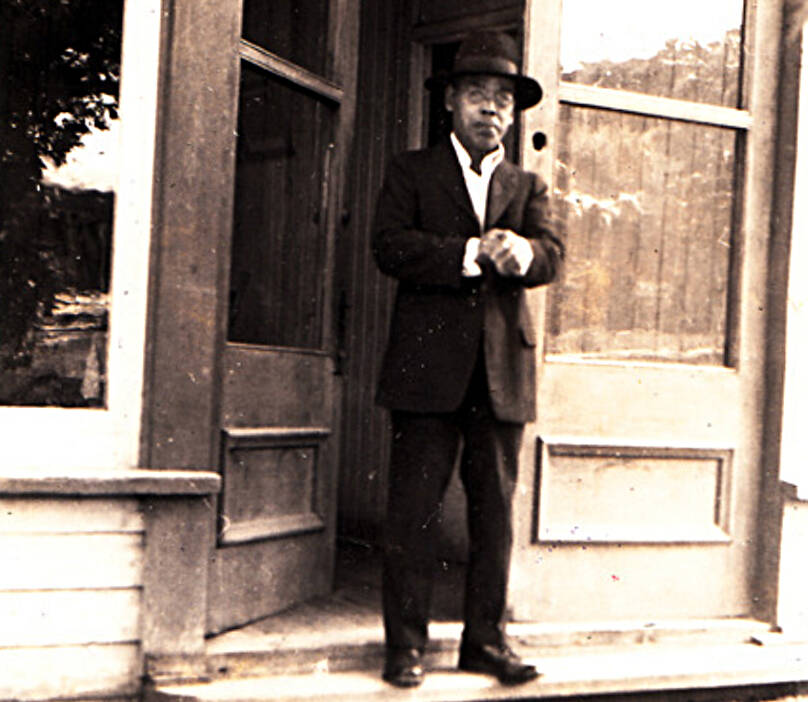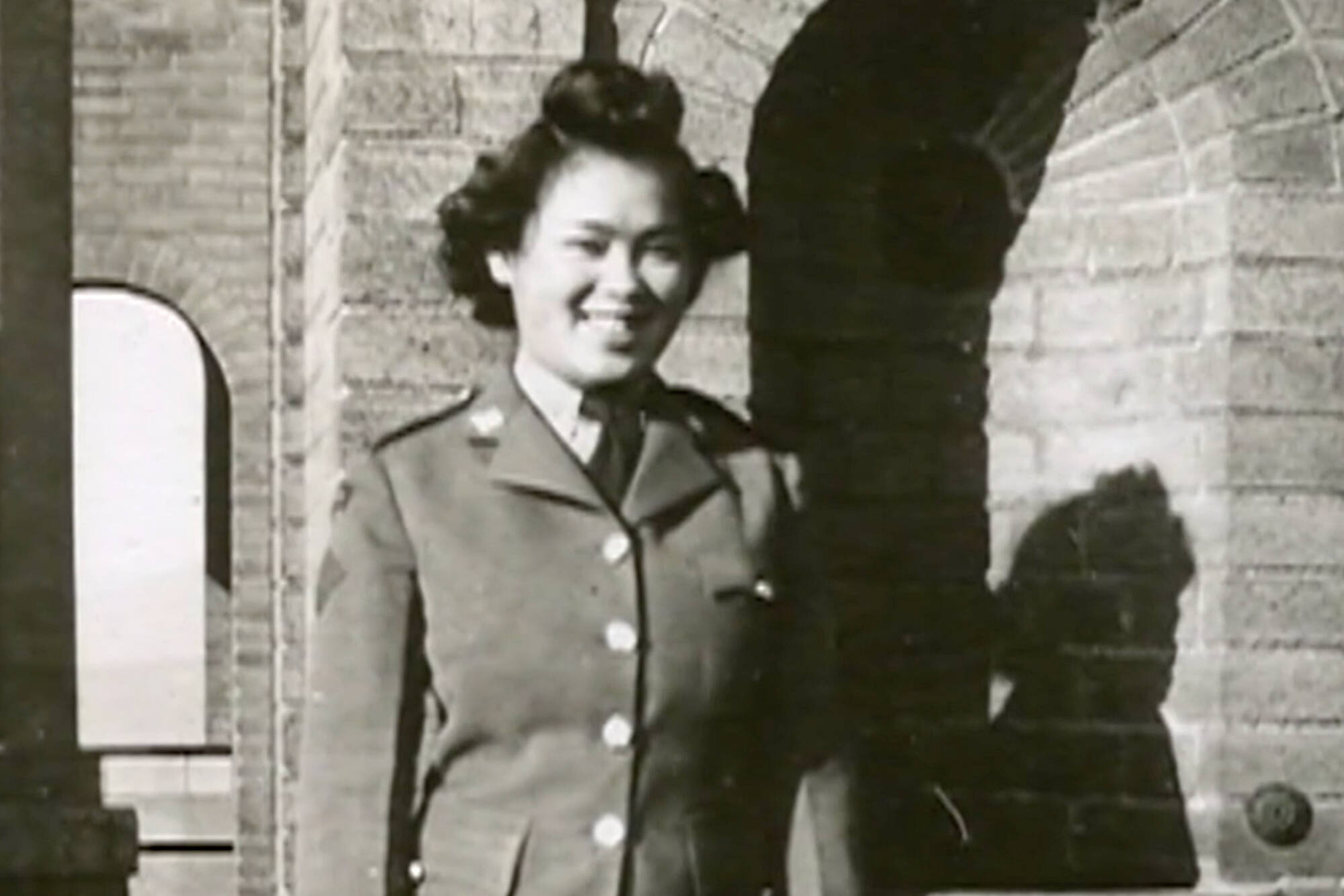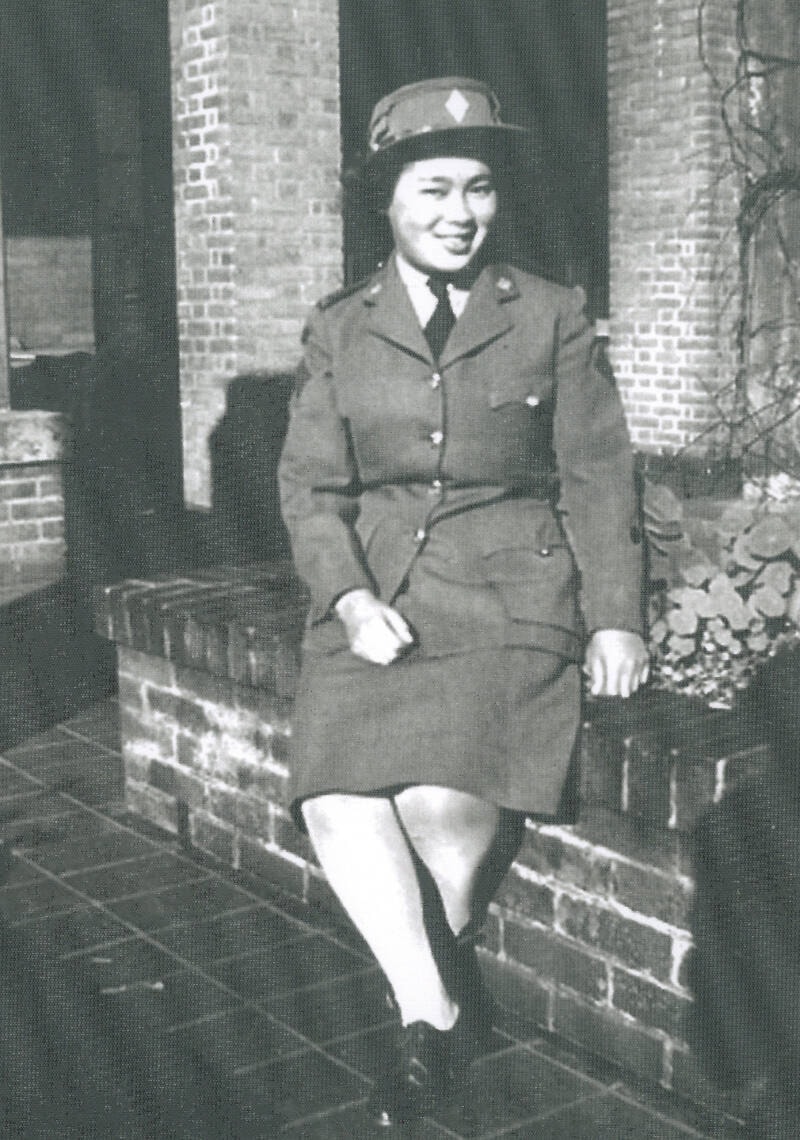“I had a dream that I should join the forces.”
It was this dream, combined with courage and determination, that led a woman born in Salmon Arm to serve Canada in the Second World War. Two years after the war ended, she became one of the first Chinese Canadian women in the country to receive their Canadian citizenship.
Mary Laura Wong (nee Mah) was one of two daughters of Mah Yick and Jean Ing. Owner of a hand laundry on Hudson Avenue in Salmon Arm, Mah Yick’s story and business are featured at R.J. Haney Heritage Village and Museum.
Mary’s mother Jean died shortly after Mary was born in 1923.
Mary had an older sister, Helen, born five years earlier. Her father was left with a horrific problem. How to ensure his young daughters received the care they needed.
This was during the time of Canada’s Chinese head tax and then, the Chinese Exclusion Act. Because of the legislation, Mah Yick was not able to find another wife, he did not have family in Canada to support him, nor could he look after his daughters while working long hours at the laundry.
According to museum curator Deborah Chapman, after Jean died, a community of women in Salmon Arm, many from the Methodist church, came to the family’s aid. They convinced Mah Yick to send his daughters to the Oriental Home & School established by the Women’s Missionary Society in Victoria. The girls could stay together and he would be able to stay in contact with them.
Read more: Mah Yick’s historic laundrey in Salmon Arm
Read more: Celebrate the ties that bind city’s past and present
According to an article from Toronto, where Mary moved, it stated ‘Laura,’ as she was called at the orphanage so as not be confused with another Mary, said she didn’t feel neglected or unloved while she was there. She stayed until she was 17.
With the start of the war came her dream to join the Air Force.
However, when she learned the quota of women in the Air Force had been filled, she set her sights on the army.
“I didn’t want the navy because I couldn’t stand black stockings in those days,” she said, laughing, in an interview with Larry Wong. The interview is featured on the federal government’s Veterans Canada website, courtesy of the Chinese Canadian Military Museum. “So I joined the army.”
“When I went down to join… the fella says to me, ‘You’re too young, you’re not 18.’ I said to him, ‘I’ll be back tomorrow with my birth certificate.’ He couldn’t believe I was 19.”
Mary was sent to Kitchener, Ont. for basic training. Then she was enrolled in a clerks course.
“After that course was over, the staff sergeant said to me, ‘I want you to be a teacher.’
“I said, ‘a teacher?’ ‘Yes, you’re very good,’ he says. ‘I want you to teach typing.’”
“Oh no, no, no, not me.’
“I says, ‘Can you see me, little me, standing up there teaching all these adults?’
“He says, ‘it’s not your size, it’s what you have up here,’” referring to her brains.
Instead of teaching, she was sent to Vancouver to join the Royal Canadian Signal Corps as a teletype operator.
Mary spoke enthusiastically of her time on the 14th floor of the Hotel Vancouver where members of the corps worked and were housed.
“When we had to work the midnight shift…, the cooks would cook a special meal for us at 11 oclock before we went on duty. I’m afraid I was very spoiled there,” she laughed.
“In the candy department, they knew I liked cherry blossoms, so when the cherry blossoms came in, a fellow there would say to me, ‘Laura, I’ve got cherry blossoms for you,’” she laughed. “So sometimes he would let me buy enough for all the girls that were in the Signal Corps.”
As the only Chinese woman in the Vancouver barracks, Mary told the interviewer she did not experience discrimination there.
“I had a wonderful time. Everybody was very kind and good and friendly to me.”
She said the hotel had a beautiful roof-top garden. Sometimes in the afternoons before they went to work, the women would sunbathe in the garden.
Asked if she worked on secret documents, Mary said only:
“We used to have colonels and the higher-ups come in and I would be on the Ottawa machine and they would dictate to me and I would teletype for them and they would wait for the answer.”

According to the Salmon Arm museum, from time to time the Observer reported that the Mah girls came home to visit their father. When Mary showed up in her army uniform, “Mah marched her all around town – all two square blocks of Salmon Arm. He was so proud of her!”
After the war, on March 28, 1947 according to her certificate, Mary was among the first Chinese-Canadians to receive Canadian citizenship along with two other Chinese women and five Chinese men in a special ceremony in Vancouver. The certificate identifies her as Marian Laura Mah.
Mary Laura Wong died in Toronto in 2016 in her 93rd year.
To read or hear more about her, go to the Chinese Canadian Military Museum website.
martha.wickett@saobserver.net
Like us on Facebook and follow us on Twitter and subscribe to our daily newsletter.

